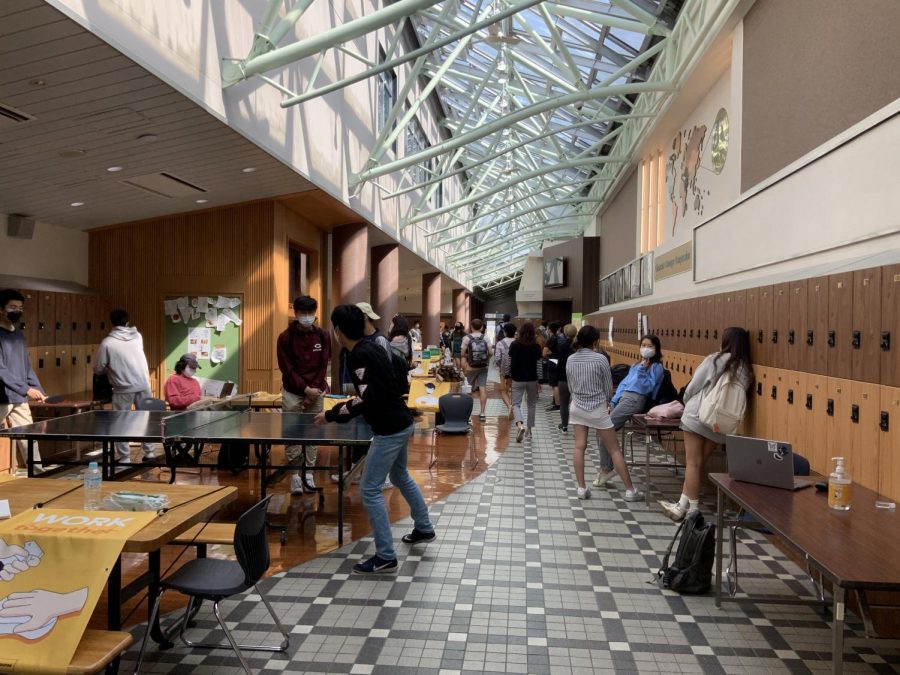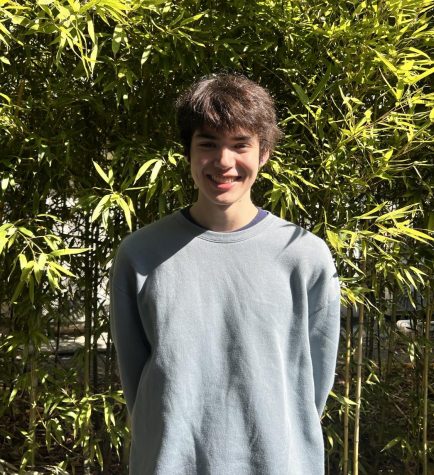From Hybrid to Face-to-Face
March 31, 2021
For the first time ever in the 2020-2021 academic year, both Middle School and High School ASIJ students are now on campus at the same time.
Previously, the Hybrid model necessitated by the coronavirus pandemic limited the number of students by separating the MS and HS on-campus days. However, the implementation of the Face-to-Face model now means that ASIJ students who had not seen each other in almost a year will now meet on a daily basis.
With the exception of High School bus monitors, the amount of interaction between MS and HS students has truly been limited. This limitation is reflected in the number of changes that have accompanied the Face-to-Face transition.
For one, due to conflicts in time between MS lunch and HS community time, HS students will no longer be able to access the Kiosk during their previous lunchtime. Additionally, several classes have been moved, with some classrooms being physically divided into two to create more space.
The transition to Face-to-Face is more complicated than it seems. Several hundred additional students attending a pandemic-oriented campus daily was bound to bring about changes.
However, these seemingly limiting changes are overshadowed by the overwhelming amount of new benefits that are brought by the Face-to-Face model. With the creation of two new food and beverage spots — the Theatre Cafe and Courtyard Cart — students now have greater liberty regarding what and where to eat. It should go without saying that these benefits also contribute to ensuring that there are less clusters of students in a single area.
Additionally, students can expect to experience a new sort of daily school life with the potential for MS-HS interaction. Whether on the bus, through clubs, or sports, there is now an increased number of opportunities for Middle and High School students to participate in collaborative activities. These opportunities give High School students the ability to demonstrate leadership, and for all students to strengthen their teamwork and communication skills with students that they may be less familiar with. These shifts in day to day activities will likely alter many students’ school experience in a positive fashion.
The changes that the latter half of the semester will undergo are a response to the climate and situation of the ASIJ community. Of course, these changes will be accompanied with shifts in how students and faculty will interact with and between each other in their daily school schedule. It is therefore vital that all members of the community remain vigilant in their decision making in respect to ensuring the longevity of the Face-to-Face model.





















Katelyn • Apr 30, 2021 at 2:51 PM
This was very informational. I personally would like to see the Theater cafe selling different products as to the kiosk, but I get why if people what the theater cafe selling the same stuff since we don’t have access to the kiosk during community time.
Olivia Saroukos • Apr 30, 2021 at 12:19 PM
Hi Ryne, your writing was spot on, and really highlighted the pros and cons of face-face, and how the transition was difficult. Do you think ASIJ as a community has now settled into its new ways?
Noa Grasse • Apr 30, 2021 at 12:15 PM
Really cool article! I loved how you said students now have greater liberty regarding what and where to eat. It’s also nice to see we’re still on face to face after a month!
Grace • Apr 29, 2021 at 2:49 PM
This was such a great article! I really liked how you explained the benefits of F2F learning and the future of how we should continue with F2F.